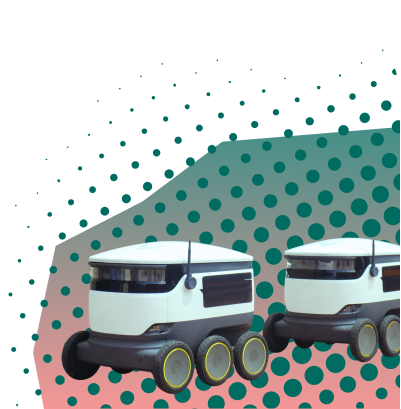What is AgTech?
Agriculture Technology, known by its short abbreviation AgTech, relates to the application of technology in the agriculture sector. It’s an industry that encompasses diverse solutions at every step of the food production process, with the goal of reshaping the food supply chain. This spans from water management and soil analytics to automation of agricultural process, all to help farms grow more efficiently.
Research published in 2022 states that global agriculture equates to around 30% of greenhouse gas emissions. To combat this, AgTech aims to revolutionize the sector and reduce the impact of farming on the planet, while accelerating the production needed to feed the ever-growing human population.
It has been predicted that in order to feed the population by 2050, we will need to increase the production of food by nearly 70%. In good news, the report states that this will not cause food security issues, as the biggest increase in population will happen in developing countries. How do we feed the population without destroying the planet? Technology will be the number one answer, and here’s how!
What are the key segments of AgTech?
As of now, there are three key segments within Agricultural Technology sector. These are robotics and automation, precision agriculture and controlled environment agriculture (CEA).
1. Robotics and Automation
Robotics and automation were brought into agriculture with the goal to cover the easier, mundane tasks to reduce the amount of manual labour. Robotics can be used during the harvest process as a way of collecting produce efficiently without impacting its quality. Right now, robots can help with harvesting strawberries and apples, with the possibility of further expansion, as well as seeding and weeding.
Usage of drones is another popular tactic used by farmers to monitor the conditions of their farms remotely and to apply fertilizers and pesticides. Plus, they can help in locations where water is a scarce resource due to being able to monitor fields for leaks. Autonomous tractors are also a way robotics and automation can advance agriculture, because just like drones, they can be controlled remotely, or even pre-programmed to give full autonomy to a producer. These technologies help not only to reduce labor costs, but also increase the efficiency across operations.
2. Precision Agriculture
Precision Agriculture relates to the integration of artificial intelligence (AI) and the internet of things (IoT) into already established farming practices. IoT brings a huge class of internet-enabled sensors, that can report on soil conditions in real time by providing analytics related to temperature, humidity and acidity of the soil. This technology also helps with plant analytics, related to plant growth and health.
The introduction of artificial intelligence (AI) has brought innovations such as Agriculture Clouds (AGClouds), that can help reduce the costs of chemicals and fertilizers by providing farmers with accurate instructions generated by cloud-based AI systems. These technologies provide farmers with big amounts of data, which can be used to boost efficiency.
3. Controlled Environment Agriculture (CEA)
CEA refers to plant cultivation in a controlled setting. It is the newest addition to AgTech segments that is growing at a rapid speed. With the rise of a controlled environment, we’re gaining the ability to grow food almost anywhere all year round, which would accelerate the change in agriculture rapidly. CEA optimizes the use of resources such as energy, space, water, capital, and labor.
For example, one technology used in controlled environment agriculture is using soilless solutions full of nutrients needed for the plants to grow healthy. Another example can be vertical farming, stacking plants horizontally or in towers. Using technologies related to CEA is cited as a method that increases food safety as it removes the possibility for contamination, decreases the possibility of pest invasions, as well as increases the security of supply.
How will the farms of the future look like?
With the increasing environmental crisis, further pushed by climate change, the economic impact of catastrophic weather events and society’s push for more ethical and sustainable practices are a new set of challenges posed to agriculture. Hardware and software are slowly coming together and becoming staples in the industry, as we’re witnessing a major shift in our approach to food and farming. We are now facing the introduction of what is generally called Agriculture 4.0, a technology-led industry that aims to solve the scarcity of food while eliminating the impact on the planet. In a report by World Government Summit published in 2021, it has been said that:
“Agriculture 4.0 will no longer depend on applying water, fertilizers, and pesticides uniformly across entire fields. Instead, farmers will use the minimum quantities required and target very specific areas. It will be possible to grow crops in arid areas, making use of abundant and clean resources such as the sun and seawater. Other innovations – 3D printing of foods, cultured meat, genetic modification, and seawater agriculture – are still in the early stages but could all be game-changers in the next decade.”
Although many technologies are already being used and further developed, there is still an enormous potential for more. What will be the focus points for the future of agriculture? One of the key things that will increasingly take hold and enable new possibilities in farming will be widespread connectivity. How? By accelerating these three points:
-
Further spread of Internet of Things.
The lowering costs of sensors and low-power networks will enable IoT to scale up and accelerate its use in precision agriculture. Possible uses will include monitoring of large herds of livestock, irrigation of fields, monitoring health of the crop and tracking of the performance of remote systems, buildings and machinery.
-
Mission-critical services.
Improved stability of networks mentioned above will allow further development of reliable and responsive applications needed for operations of remote and autonomous systems. This will allow farmers to reduce the costs of labor and improve the efficiency of their farms.
-
Near-global coverage
The increase in network possibilities further introduced in more rural areas of the world will enable the acceleration of digitalization, which will fuel the productivity of global farming. With more accurate geolocation services and spread of internet, the automation, robotics and monitoring will become more advanced and accurate.
It has been estimated that the increase in connectivity could unlock more than $500B in GDP by 2030, but the wide-spread of connectivity is not the only thing that will enhance the future of farming. There are a couple of challenges that need to be addressed when it comes to the future of agriculture, such as the costs of adoption of technology, especially in more rural, undeveloped areas on the planet. Technical issues and the breakdown of equipment pose another challenge, but with how fast technology is developing in today’s world, these adversities will be addressed in no time.
We spoke about the more “wired” side of things, but another technology that will play a huge role in the agriculture of the future will be the acceleration of modified food. Although many countries banned genetically modified organisms, farmers came up with a solution: genome editing. Rather than shifting entire genes, genome editing imitates the natural process of gene mutation. This will enable farmers to modify their produce to be more resilient to pests and diseases. This will result in healthier and more sustainable security of food production, especially in areas more prone to adversities related to that. Additionally, technologies related to lab food cultivation, such as lab grown meat production could help reduce the footprint related to livestock, and bring a more ethical and sustainable way of feeding the world’s population.
Our farms of the future will be technologically advanced systems, relying on hardware and software in order to enable sustainable and secure food production. Most of our produce will be cultivated indoors, with the use of automation systems and robotics to reduce the costs of labor, resources and ensure efficiency. Farmers will be able to attend to their crops remotely, thanks to drones, cloud-based systems and monitoring solutions, that will enable the progress and health of their produce. They will also ensure produce resilience through genome editing.
AgTech is truly revolutionizing the way we think about agriculture and food production. Although many technologies, such as artificial intelligence, cloud computing or even genome editing is still in their early stages when it comes to farming, technology will push the industry onto new heights. With the adoption of new advanced solutions, agriculture is an industry with great growth potential. In just a couple of years’ time it will be nothing like it is now, but with the world’s needs rapidly changing, agriculture must change too. The future of agriculture will require specialists fully dedicated to innovation and change, and that is where AgTech recruitment will come in necessary. The reality is, agriculture already is on its new path to a more sustainable future.















